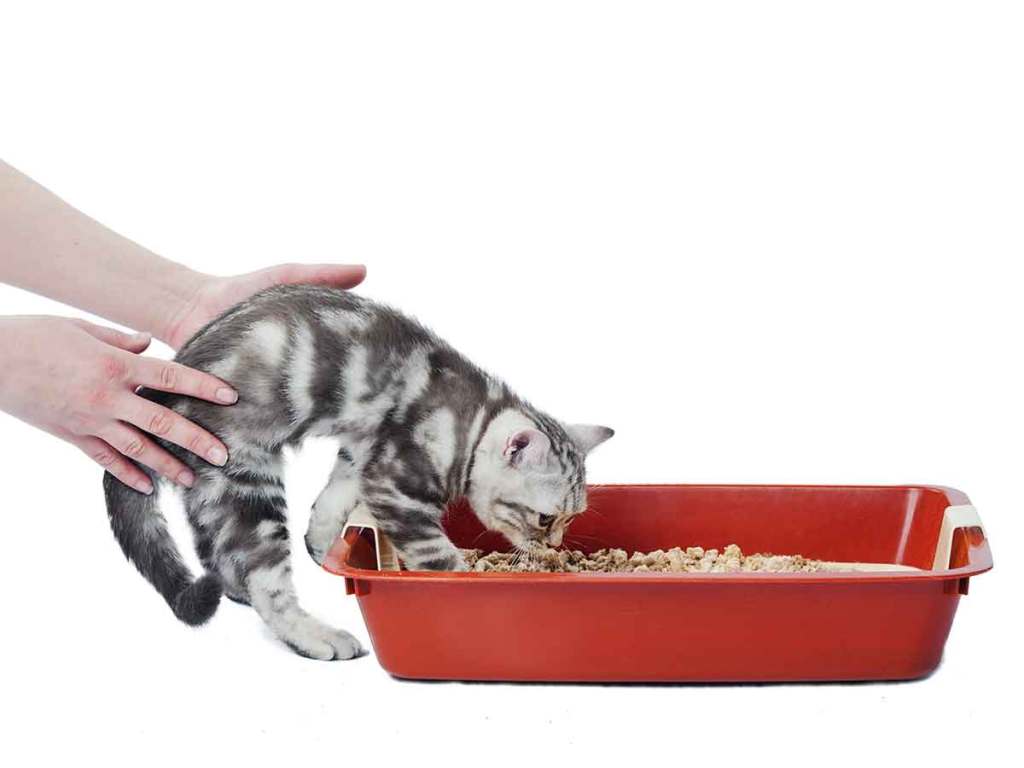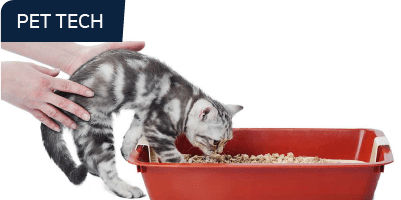
Choosing a litter box
Fluffy is unique, so her litter box should be too. Make sure you’re choosing the right one.
Choosing a litter box may not seem complicated, but with dozens of different styles and models on the market, you might wonder exactly what your cat really needs. Here’s the low down on choosing the right potty spot for Fluffy:1
- Size – A small box is okay for kittens and a one-cat household, but if you have a large cat or multiple cats, get the largest litter box available.2
- Materials – The basic box is rectangular and made of plastic. It should be light enough to pick up easily. Plastic is easy to clean, but it does retain odor after a while, so be prepared to replace it annually. Stainless steel litterboxes cost more up front, but they don’t retain odors — so they might last for your cat’s lifetime.
- Rimmed – Some boxes are equipped with a removable rim so that Fluffy can’t easily kick litter out. This is a nice option and comes with most inexpensive boxes.
- Covered or open – Some cats are ok with a covered box, but usually when they’re smaller. Larger cats sometimes resist a covered box, so if you’re really interested, make sure the box and cover provide plenty of space. You can purchase a box with a hood, or even a fancy, covered box that looks like a piece of furniture. Hooded boxes give the cat privacy and prevent litter from being kicked outside of the box. Some hooded boxes have a swinging door—your cat may or may not accept this feature, so watch to make sure that Fluffy is using the box. If he doesn’t like the door, you can always remove it. If he completely resists the covered box, be prepared to reconsider.
- Depth – Usually, a depth of three to six inches or so will do—you may need a deeper box and more litter for larger cats, male cats, or multiple cats.
- Color and opacity – Box color and opacity matter more to you than to your cat. But the opacity of the box’s hood, if it has one, matters more to your cat. Some cats prefer more privacy than others, while some don’t like being enclosed at all, so you may have to experiment a bit with the type of hood that works best for your cat.
- Vented – Some boxes come with vents that contain replaceable odor-controlling filters and pads. This is a nice feature if you have an odor problem or if the box will be in a public area of your home.
- Electronic – There are several self-cleaning boxes on the market, and many consumers like them, especially for multiple cat households. These units usually have a sifter activated by the cat’s motion leaving the box. Waste is collected in a receptacle for easy cleanup. Just make sure that the unit’s noise doesn’t scare Fluffy and make him refuse to use the box. Find out what the return policy is before you purchase this type of box. However, it’s common for these boxes to have less space, so they may not work well for larger cats.
- Sifting box – This type of box is really two boxes in one—one that’s solid on the bottom and one that acts as a colander on the top. When it’s time to clean the box, simply remove the top box, sift it gently, and toss out the waste.
- Disposable – Disposable boxes are convenient and some even come with a fold-up hood and odor-control features. When the litter becomes soiled, simply pick up the box and toss it. Most come with the litter already included.
A little about litter
Once you determine the box type, you’ll need to explore options for cat box filler.
You can explore options like clay, silica clay, pine, wheat, grass, corn, or paper. If your cat doesn’t like one type, keep trying — but once you find one that works, try to stick with it.
The best litter box is the one that works for your cat, your budget, and your lifestyle.
Authored by Nikki Moustaki
REFERENCES:
- Nicholas, Jason. Litter Box 101: How to Choose the Best Litter Boxes for Your Cat and Why You Need To. Preventative Vet. https://www.preventivevet.com/cats/how-to-choose-the-best-litter-boxes-for-your-cats-and-why-you-need-to
- Guy N., Hopson M., Vanderstichel R. (2014). Litterbox size preference in domestic cats (Felis catus). ScienceDirect. https://doi.org/10.1016/j.jveb.2013.11.001
More like this
- Top five ways to love your pet
 Your furry friend loves you unconditionally, so show your dog or cat that you love them right back
Your furry friend loves you unconditionally, so show your dog or cat that you love them right back - Choosing a litter box
 Fluffy is unique, so her litter box should be too. Make sure you’re choosing the right one.
Fluffy is unique, so her litter box should be too. Make sure you’re choosing the right one. - Could you raise a service dog?
 Interested in raising a service dog? Here’s what you need to know.
Interested in raising a service dog? Here’s what you need to know.




